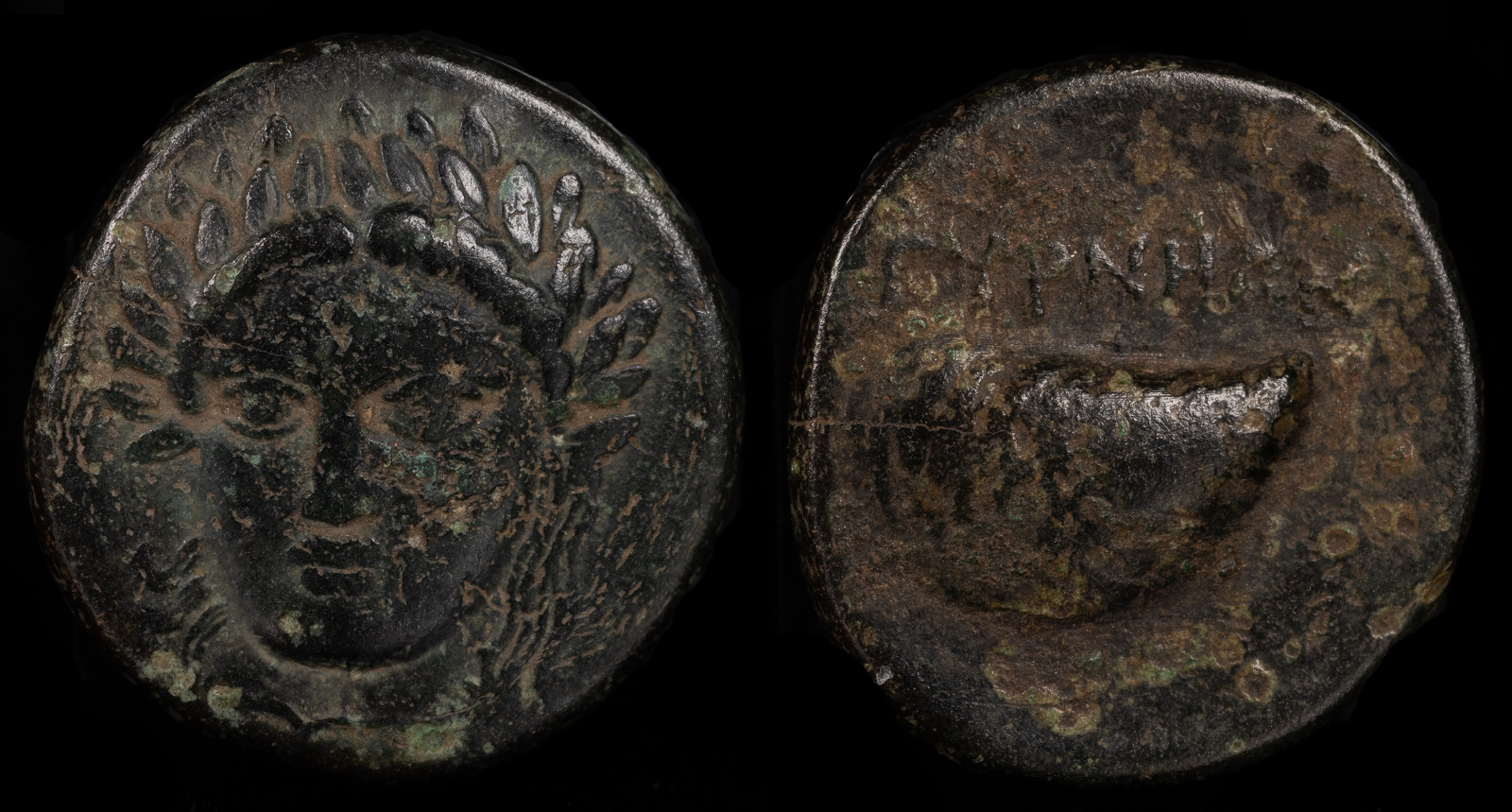
AEOLIS. Gyrneion
3rd century BCE
AE 16 mm, 3,87 g
Laureate head of Apollo facing slightly to left
Rev. ΓΥΡΝΗ Mussel shell
SNG München 438; SNG Copenhagen 202-203; SNG von Aulock 7689
Ex Savoca
Gryneion was one of the twelve important cities of Aeolis and the site of an oracle. Pausanias is believed to have visited it, as he describes it as “the most beautiful grove of Apollo.” He also states that it’s a good place to see leather breast-plates, whose manufacture he describes and states that they’re useful for hunters because they break the teeth of lions and leopards, but not so useful for war because they let in iron.
The city was forty stadia from Myrina, or between four and five miles, and eventually the city was taken over by them.
The obverse of this coin depicts Apollo, which is an obvious choice given the sanctuary to Apollo with oracle that resided there. This was the religious center for all of Aeolis. Strabo remarks that the temple was of white marble.
The mussel on the reverse is likely because oysters were famed for being caught here, as Pliny the Elder remarked. He also remarked that it lie on land reclaimed from the sea.
In 334 BCE, Alexander the Great’s general Parmenion and took the town. He then burned it and sold the inhabitants as slaves in order to convince the surrounding cities to not resist.
Parmenion, a general of Alexander the Great, takes Gryneion, burns it, and sells the inhabitants as slaves.